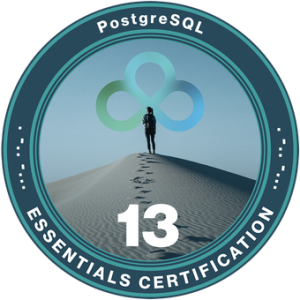How to recreate Grid Plug and Play ( GPnP ) profile ?

The GPnP profile is a XML file located in GRID_HOME/gpnp/<hostname>/profiles/peer under the name profile.xml. It is stored in the local OCR and in the cluster OCR. In case of errors GPnPD deamon re-creates the profile.If GPnPD is not able to re-creates the profile , you should create it manually.
GPnP Service
- The GPnP service is collectively provided by all the GPnP agents.
- It is a distributed method of replicating profiles.
- The service is instantiated on each node in the domain as a GPnP agent.
- The service is peer-to-peer; there is no master process. This allows high availability because any GPnP agent can crash and new nodes will still be serviced.
- GPnP requires standard IP multicast protocol (provided by mDNS), to locate peer services. Using multicast discovery, GPnP locates peers without configuration. This is how a GPnP agent on a new node locates another agent that may have a profile it should use.
The GPNP has 2 parts a WALLET and a PROFILE configuration:
PROFILE configuration:
$GRID_HOME/gpnp/profiles/peer/profile.xml
The WALLET information can be found in : $GRID_HOME/gpnp/wallets/
This XML Profile is used to establish the correct global personality of a node. Each node maintains a local copy of the GPnP Profile and is maintainid by the GPnP Deamon (GPnPD) . The GPnP profile is a small XML file containing bootstrap information for the cluster. Each node maintains a local copy of the GPnP Profile. The profile doesn’t contain any node related information and exists on every node in the GPnP cache.
GPnP Profile contains various attributes:
- Cluster name
- Network classifications (Public/Private)
- Storage to be used for CSS
- Storage to be used for ASM : SPFILE location,ASM DiskString etc
- Digital signature information :
You can recreate gpnp profile , as below :
- Delete all xml file under $GRID_HOME/gpnp/profiles/peer folder.
cd $GRID_HOME/gpnp/profiles/peer
rm -rf * - Create profile.xml file from cache :
cd $GRID_HOME/gpnp/profiles/peer
$GRID_HOME/bin/gpnptool get -o=profile.xmlContent of profile.xml file should be as below :[oracle@oradb01 peer]$ cat profile.xml
<?xml version=”1.0″ encoding=”UTF-8″?><gpnp:GPnP-Profile Version=”1.0″ xmlns=”http://www.grid-pnp.org/2005/11/gpnp-profile” xmlns:gpnp=”http://www.grid-pnp.org/2005/11/gpnp-profile” xmlns:orcl=”http://www.oracle.com/gpnp/2005/11/gpnp-profile” xmlns:xsi=”http://www.w3.org/2001/XMLSchema-instance” xsi:schemaLocation=”http://www.grid-pnp.org/2005/11/gpnp-profile gpnp-profile.xsd” ProfileSequence=”12″ ClusterUId=”6244f29bcd23efdebf405e70f8d01746″ ClusterName=”sba5-cluster” PALocation=””><gpnp:Network-Profile><gpnp:HostNetwork id=”gen” HostName=”*”><gpnp:Network id=”net1″ IP=”10.10.1.0″ Adapter=”bondeth0″ Use=”public”/><gpnp:Network id=”net2″ IP=”192.168.8.0″ Adapter=”bondib0″ Use=”cluster_interconnect,asm”/></gpnp:HostNetwork></gpnp:Network-Profile><orcl:CSS-Profile id=”css” DiscoveryString=”+asm” LeaseDuration=”400″/><orcl:ASM-Profile id=”asm” DiscoveryString=”o/*/*” SPFile=”+DBFS_DG/sba5-cluster/asmparameterfile/registry.253.956501629″ Mode=”remote”/><ds:Signature xmlns:ds=”http://www.w3.org/2000/09/xmldsig#”><ds:SignedInfo><ds:CanonicalizationMethod Algorithm=”http://www.w3.org/2001/10/xml-exc-c14n#”/><ds:SignatureMethod Algorithm=”http://www.w3.org/2000/09/xmldsig#rsa-sha1″/><ds:Reference URI=””><ds:Transforms><ds:Transform Algorithm=”http://www.w3.org/2000/09/xmldsig#enveloped-signature”/><ds:Transform Algorithm=”http://www.w3.org/2001/10/xml-exc-c14n#”> <InclusiveNamespaces xmlns=”http://www.w3.org/2001/10/xml-exc-c14n#” PrefixList=”gpnp orcl xsi”/></ds:Transform></ds:Transforms><ds:DigestMethod Algorithm=”http://www.w3.org/2000/09/xmldsig#sha1″/><ds:DigestValue>zYk8B+OxnN/85tDFGSDFaeq3fdqy28=</ds:DigestValue></ds:Reference></ds:SignedInfo><ds:SignatureValue>lKgAfEfasgrtgerhbdasbaA+Wwaefgef9lDwBaoKxOxtbwbr+KGLs7ZHILDjeiNBjYv3Wo4PbbDL6hpUI+z/a6DxpkepRgasERTw3erJjZKp0YpFot7po10dGt/uwUbQ1dPch6nKnPKaoeZfuSKnrRD07VOmergSDFGaswetgawdefaOrk=</ds:SignatureValue></ds:Signature></gpnp:GPnP-Profile> - Disable crs :
su – root
$GRID_HOME/bin/crsctl disable crs - Reboot the server :
su – root
reboot - Start crs after reboot :
su – root
$GRID_HOME/bin/crsctl start crs -wait - Reenable crs :
su – root
$GRID_HOME/bin/crsctl enable crs









